*NURSING > DISCUSSION POST > NR 509 Week 4 class discussion – Chamberlain college of Nursing | Week 4: Men's Health and the Int (All)
NR 509 Week 4 class discussion – Chamberlain college of Nursing | Week 4: Men's Health and the Interview
Document Content and Description Below
NR 509 Week 4 class discussion – Chamberlain college of Nursing Week 4: Men's Health and the Interview 55 unread replies.5656 replies. Using a friend, family member, or colleague, perform a ... detailed men’s health history. Document the history and the expected normal physical examination findings in the SOAP note format. Even though your patient may have abnormal findings, you must document the expected normal exam findings for the system. If you would like to include the abnormal findings they should be noted in parenthesis next to the normal expected findings. The complete subjective and objective sections must be included. You may include the assessment and plan portion of the SOAP note, but these sections will not be graded. You should devise a chief complaint so that you may document the OLDCART (HPI) data. You must use the chief complaint of penile discharge, rectal bleeding, or frequent urination. You should also focus the ROS based on the patient’s chief complaint and the body systems being examined. Refer to the SOAP Note Format document in Course Resources as necessary. This will be the same format that faculty will follow during the immersion weekend. * There are videos of the exams to be performed at immersion in Modules → Introduction and Resources→ Immersion section. Also the immersion evaluation forms are located in the Course Resources section. They should be reviewed and practiced often. This topic was locked Jul 30 at 11:59pm. Search entries or author Filter replies by unreadUnread Collapse replies Expand replies Subscribed • Tiffany Lunsford Tiffany Lunsford Jul 23, 2017Jul 23 at 7:58pm Manage Discussion Entry Hello Class, This week we are going to learn about the male genitourinary systems. Again, I encourage you to keep in mind the historical, social, co-morbid, genetic, etc. factors that may affect the assessment of this system. Keep up with the reading. I hope you are practicing all parts of your history and physical exam, both a focused and complete exam, and are preparing for immersion weekend. Be sure to print and review the station check off sheets in Course Resources, and all the material included under Immersion Supplemental Files. You should print in color. Also, you should bring these with you for practice and notes at immersion weekend. Week 6: You know I will be present and asking questions in the discussion threads and Q&A area. I will have discussion thread feedback by Friday evening with grading. Remember that I am still here if you need me. What you should do Week 4: 1. Again, there are lots of chapters to read this week, but the Jarvis text is fantastic because it has lots of hints and images. Read in both the Jarvis and Swartz text each week. 2. Participate in the Week 6 TD and complete a men’s health interview. 3. Take the QBank practice test Course Outcomes for Week 6: (CO’s 3, 6, & 8) 3: Demonstrate knowledge required to perform a focused health history and examination for developmental, gender-related, age-specific, and special populations. (PO 1, 5) 6: Differentiate normal from abnormal findings. (PO 1, 4) 8: Adapt history and physical examination to the needs of the patient, i.e., pediatric versus geriatric patient. (PO 1, 4, 7) Dr. Lunsford • Collapse SubdiscussionAmanda Russo Amanda Russo Jul 24, 2017Jul 24 at 12:46pm Manage Discussion Entry D.G., 59, M, Caucasian, Anthem Blue Cross S. CC: Frequent urination HPI: Onset: 2 days ago Location: Penis Duration: Throughout the entire day, wakes up in the middle of the night as well Characteristics: Frequent dribbling after, and sense of incomplete bladder emptying at times Aggravating Factors: Drinking too much fluids Relieving Factors: None Treatment: Limiting fluid intake Current Medications: Simvastatin 20 mg PO every HS Metoprolol 25 mg PO BID Allergies: NKA PMHx: High cholesterol, renal stones, and HTN No hospitalizations or surgeries Seasonal flu vaccine 10-17-2016 Last tetanus vaccine 7-15-2012 Soc Hx: Engineer for the Cleveland airport Enjoys working on his classic car, going to car shows, camping, and going to restaurants Married with no children Denies the use of tobacco and drugs, and socially uses alcohol once to twice a week consuming 2-6 beers total College education Heterosexual Fam Hx: Mother- COPD, HTN, cataracts Father- HTN, Afib, PN, hypothyroid Sister- HTN, anxiety Paternal grandmother deceased from end stage COPD Paternal grandfather deceased from MI Maternal grandmother deceased due to “old age” Maternal grandfather deceased from end stage CHF ROS: CONSTITUTIONAL: No weight loss, fever, chills, weakness or fatigue. HEENT: No visual loss, blurred vision, double vision or yellow sclera. Ears, Nose, Throat: No hearing loss, sneezing, congestion, runny nose, or sore throat. SKIN: No rash or itching. CARDIOVASCULAR: No chest pain, chest pressure, or chest discomfort. No palpitations or edema. RESPIRATORY: No shortness of breath, cough, or sputum production. GASTROINTESTINAL: No anorexia, nausea, vomiting, or diarrhea. No abdominal pain or blood. GENITOURINAY: No burning on urination. NEUROLOGICAL: No headache, dizziness, syncope, paralysis, ataxia, numbness or tingling in the extremities. No change in bowel or bladder control. MUSCULOSKELETAL: No muscle, back pain, joint pain, or stiffness. HEMATOLOGIC: No anemia, bleeding, or bruising. LYMPHATICS: No enlarged lymph nodes. No history of splenectomy. PSYCHIATRIC: No history of anxiety or depression. ENDOCRINOLOGIC: No reports of sweating, cold or heat intolerance. No polyuria or polydipsia. ALLERGIES: No history of asthma, hives, eczema, or rhinitis. O. HEENT: Head: Normocephalic and symmetric. Facial features are symmetric. No enlarged lymph nodes or thyroid gland. Eyes: 20/20 vision using Snellen chart bilaterally. EOMs intact. Corneal light reflex symmetric bilaterally. PERRLA. No discharge. Ears: Symmetric bilaterally. External canals are clear with no redness or discharge. TMs are pearly gray with light reflex. No pain with palpation. Nose: Symmetric. Nares patent. Mucosa pink with no discharge or lesions. No septal deviation or perforation. No tenderness to sinuses with palpation. Throat: Tonsils 2+. No exudate. Pharyngeal wall pink. Mouth: Mucosa and gingivae pink, no lesions. SKIN: Color pink with even pigmentation. Warm to touch, dry, smooth, and even. Turgor good, with no lesions. CARDIOVASCULAR: Neck: Carotids’ upstrokes are brisk and equal bilaterally. No bruit. Precordium: Symmetrical with no pulsations, heave, or lift. Palpation: Apical impulse in 5th ICS at left midclavicular line, no thrill. Auscultation: Rate 89 bpm, regular rhythm, S1S2 are crisp with no S3 or S4 or extra sounds, no murmur. Peripheral vasculature: Extremities are pink without redness or cyanosis. Extremities are symmetric without swelling or atrophy. Warm to touch and equal bilaterally. All pulses present, 2+, and equal bilaterally. No lymphadenopathy. RESPIRATORY: Inspection: AP > transverse diameter. Resp 15/min, relaxed, and even. Palpation: Chest expansion symmetric. Tactile fremitus equal bilaterally. No tenderness. No lumps or lesions. Percussion: Resonant to percussion over lung fields. Diaphragmatic excursion equal bilaterally. Auscultation: Vesicular breath sounds clear over lung fields and equal bilaterally. No adventitious sounds. GENITOURINARY: No lesions, inflammation, or discharge from penis. Scrotum—testes descended, symmetric, no masses. No inguinal hernia. GASTROINTESTINAL: Abdomen soft, round, and non-distended. Symmetric bilaterally. Bowel sounds present, no bruits. Tympany in all 4 quadrants. No organomegaly, no masses, and no tenderness. RECTAL: No fissure, hemorrhoids, fistula, or skin lesions in perianal area. Sphincter tone good; no prolapse. Rectal walls smooth; no masses or tenderness. Prostate not enlarged; no masses or tenderness. Stool brown; Hematest negative. (Enlarged prostate). D.G. is suffering from frequent urination. He states that it is continuous throughout the day, but also wakens him up in the middle of the night. He also states that he has frequent dribbling and that he does not feel his bladder empty’s completely. This writer would investigate if D.G. is suffering from BPH. BPH “can present as lower urinary tract symptoms such as incomplete emptying, frequency, intermittency, urgency, weak stream, straining, or nocturia” (Pearson & Williams, 2014, p. 769). This writer would suggest obtaining a urinalysis to start with. The digital rectal exam (DRE) and PSA testing are other options which would be discussed with D.G. The benefits and risks would be weighed, and he would not be pressured in either direction. There is limited date on the value of DRE alone or in combination with PSA testing (Mulhem, Fulbright, & Duncan, 2015). The American Academy of Family Physicians does not routinely support screening for prostate cancer using a PSA or DRE (Mulhem, Fulbright, & Duncan, 2015). The American College of Physicians recommends to inform men between the age of 50 and 69 about the limited benefits and substantial harms of screening, and to not screen men older than 69 years or men with a limited life expectancy of less than 15 years (Mulhem, Fulbright, & Duncan, 2015). The American Urological Association emphasizes using shared decision making with men 55 to 69 years of age. They also recommend to “not screen men younger than 40 years, older than 70 years, or who have a life expectancy of less than 10 to 15 years” (Mulhem, Fulbright, & Duncan, 2015, p. 686). References Mulhem, E., Fulbright, N., & Duncan, N. (2015). Prostate cancer screening. American Family Physician, 92(8), 683-688. Pearson, R., & Williams, P. (2014). Common questions about the diagnosis and management of benign prostatic hyperplasia. American Family Physician, 90(11), 769-774 o Collapse SubdiscussionTiffany Lunsford Tiffany Lunsford Jul 25, 2017Jul 25 at 5:19am Manage Discussion Entry Thanks Amanda! I would add some extra information in the GU ROS since this was his chief complaint and the only thing addressed there was dysuria. When you are thinking about BPH vs UTI or different differential, do you think that BPH would have a sudden onset like this patient (2 day history) or has this just gotten worse in the past two days? *If you were going to start treating for BPH, what medication would you start with and why? Really great job! Dr. L ♣ Amanda Russo Amanda Russo Jul 27, 2017Jul 27 at 10:47am Manage Discussion Entry Hello Dr. L., For the ROS I would include in the GENITOURINARY system: No abnormal color changes to urine. No hesitancy or straining described. No rash or discharge. Denies lumps or swelling on the testes. Denies lumps or lesions on the penis. Patient is sexually active and in a monogamous relationship with his wife. Denies any known STI contact. In response to the BPH, the symptoms have worsened in the last two days. The medication I would choose would be terazosin 1mg at HS. (Epocrates, 2017). This medication can be titrated up to 20 mg if needed. The American Urological Association (AUA) recommends alpha blockers as a first-line treatment for men with BPH and those who suffer from moderate to severe symptoms (Pearson & Williams, 2014). Terazosin is also one of the cheaper medication options for BPH. “Alpha blockers antagonize alpha1-receptors in the prostatic urethra and bladder neck, resulting in smooth muscle relaxation and improvement of lower urinary tract symptoms, typically within two to four weeks after initiation". Alpha blockers also lower blood pressure, and may decrease the requirements of metoprolol needed. Resources Epocrates. (2017). Terazosin. Retrieved from https://online.epocrates.com/drugs/816/terazosinLinks to an external site. Pearson, R., & Williams, P. (2014). Common questions about the diagnosis and management of benign prostatic hyperplasia. American Family Physician, 90(11), 769- 774. • Collapse SubdiscussionJade Balow Jade Balow Jul 25, 2017Jul 25 at 9:24am Manage Discussion Entry SOAP Note Week 4 Patient Information: A.M., 37, M, Caucasian S. CC: Patient presents to the clinic with complaints of penile discharge and dysuria. HPI: Onset: Penile discharge and painful urination 4 days ago. Location: Genital area Duration: Some irritation and redness started a week ago, penile discharge noticed 4 days ago with pain with urination. Characteristics: Occasional itching at the meatus. Aggravating Factors: None Relieving Factors: None Treatment: None Current Medications: Pt is taking no current OTC medications, prescription medications or herbal medications at this time. Allergies: No known drug or food allergies. PMHx: Immunizations all up to date. Last tetanus shot 05/05/2011. Ankle fracture last summer 2016. Soc Hx: Patient is single male, works construction for a large corporate operation in his home town in Arkansas. He lives with another male roommate. He is currently dating multiple women. Has one dog and no children. Never married. Fam Hx: Mother- 3 miscarriages, 2 term pregnancies. Hyperlipidemia, CAD, and Anxiety Father- Hypertension, smoker of 42 years ½ ppd, Drinks 5-7 beers a week. Brother- Unknown ROS: CONSTITUTIONAL: No weight loss, fever, chills, weakness or fatigue. HEENT: Head: Normocephalic, no lumps no lesions no tenderness no trauma. No pain. Eyes: No visual loss, blurred vision, double vision or yellow sclerae. Ears, Nose, Throat: No hearing loss, sneezing, congestion, runny nose or sore throat. SKIN: Skin appears normal for ethnicity. (Itching occasional at urethral meatus). CARDIOVASCULAR: No palpitations or edema present. RESPIRATORY: No shortness of breath, chest exapansion is symmetrical, no labored breathing noted. GENITOURINARY: No abnormal color changes to urine. No hesitancy or straining described. No difficulty controlling urine. Denies known STI contact. Denies lumps or swelling on the testes. Denies lumps or lesions on the penis. (Patient states that he is urinating more than usual and has pain present with some urination. Pain is “sometimes burning feeling, and sometimes pressure.” Patient states that he has odorless, mucoid-like discharge before urinating. Patient states that the discharge seems to make urination more painful but is not always present. Patient parteakes in sexual activity with more than one partner and does not state that contraceptive measures are always taken). GASTROINTESTINAL: No unusual bowel patterns or change in bowel habits. No rectal bleeding or blood present in stools. No over the counter or herbal medications used for bowel habits. No anorexia, nausea, vomiting or diarrhea. No abdominal pain present. NEUROLOGICAL: Patient is awake, alert and oriented to person place and situation. No previous head injury. No dizziness, syncope, paralysis, ataxia, numbness or tingling in the extremities. No previous seizures. No coordination problems, difficulty swallowing or speaking. MUSCULOSKELETAL: No joint pain, stiffness or swelling. No knee pain. No bone pain, ADLs performed with full function. HEMATOLOGIC: No anemia, bleeding or bruising. LYMPHATICS: No enlarged nodes. No history of splenectomy. PSYCHIATRIC: No history of depression or anxiety. ENDOCRINOLOGIC: No reports of sweating, cold or heat intolerance. ALLERGIES: No history of asthma, hives, eczema or rhinitis. O. Physical exam: CONSTITUTIONAL: 37 year-old male patient presents to the clinic today with complaints of penile discharge, frequent and painful urination. Patient is alert and oriented. Vital signs: BP 132/76, T: 98.0, HR: 74, RR:20, WT 197# HT 6’2” SpO2 99% room air. HEENT: Head: Normocephalic, no visible or palpable masses, depressions, or scaring. Facial features symmetrical. Eyes: Visual acuity intact, conjunctiva pink, sclera are white. PERRLA, pupil size 3 mm. Ears: External auditory canals clear, hearing intact. No sores or lesions noted to external ear structure bilaterally. No tenderness on retraction of pinnae or pressure to tragus. Tympanic membrane is visible, intact, pearly gray bilaterally. Cone of light is visible bilaterally. Nose: No drainage, redness or swelling present in the turbinate. No deviation in the nasal septum on either side. Mouth: buccal mucosa pink and moist without lesions. Lips are moist, no cracks or lesions noted. Teeth are intact, not diseased or loose. No bleeding at gingiva. Tongue is midline and symmetrical with lesions or patches present. Tonsils are grade 2, no inflammation present bilaterally. Throat: Trachea is midline, no lymph node enlargement noted. Tonsils are present bilaterally and unremarkable. Gag reflex is intact. Uvula rises symmetrically when patient says “ahhh.” Neck: Head is midline, symmetrical and erect. Full range of motion is present and muscle strength against resistance is strong bilaterally. Thyroid is not enlarged, no nodularity noted. SKIN: Skin color is appropriate for ethnicity. Skin is smooth. No rash. Good turgor. Skin is warm, dry and intact. Nail beds are pink, good circulation present. Capillary refill < 2 seconds. - - - - - - - - - - - - - - - - - - - - The PSA will provide me with data relating to the possibility of prostate cancer, which can cause delayed bladder emptying and urinary retention. Another option to test for urinary retention would be to perform a bladder scan before and after the patient provides his urine specimen, with instruction to empty his bladder after procuring the specimen, to determine post-void residual. The CMP will include BUN and creatinine, to show urinary function. If the results of these tests indicate a urinary tract infection, I would prescribe nitrofurantoin, 50 mg., qid, for seven days. I would request a urine culture on the original urine specimen, in order to determine whether or not this specific bacteria is susceptible to nitrofurantoin. It is important to educate this patient that this prescription should be taken with food, and to report any symptoms such as “fever, chills, cough, chest pain, difficulty breathing, skin rash, numbness or tingling of the fingers or toes, or if intolerable GI upset occurs” (Edmunds and Mayhew, 2014, p. 668). References Edmunds, M. & Mayhew, M. (2014). Pharmacology for the primary care provider, 4th Edition. [Bookshelf Online]. Retrieved from https://online.vitalsource.com/#/books/9780323087902/ Gill, J. D. & Biyani, C. S., (2015). Frequent urination causing sleepless nights in a 64-year-old man. CMAJ: Canadian Medical Association Journal 187(5), 348-349. doi:10.1503/cmaj.131771 Wood.week4.SOAP.docx • Collapse SubdiscussionSherry Boyd Sherry Boyd Jul 25, 2017Jul 25 at 11:06pm Manage Discussion Entry Dr. Lunsford and Class- SOAP Note D.G, 62 yr. old, Caucasian male, Health Alliance S. CC (chief complaint): Frequent urination HPI: Onset: Three days ago Location: Generalized lower pelvic area Duration: Frequency of urination has been increasing for the past three days Characteristics: Associated with burning with urination, hesitancy, and lower abdominal pain Aggravating Factors: None identified Relieving Factors: None identified Treatment: Tylenol 650 mg PO every 4 hours for lower abdominal pain without relief Current Medications: Simvastatin 20 mg PO at bedtime; Tegretol XR 200 mg 2 tablets PO twice daily, Hydrochlorothiazide 25 mg PO once daily, Multivitamin 1 tablet PO once daily Allergies: No allergies to food, medication, or environment. PMHx: Last tetanus vaccine 2015. Last influenza vaccine September 2016. Mumps at 20 years old; Surgeries include: total left knee replacement June 2017. Consistently wears a seat belt when in a vehicle. Performs monthly testicular self-exams. Soc Hx: Retired from the Illinois Secretary of State in 2014. Married with 2 adult children. Drinks approximately 2 beers a month. Quit smoking cigarettes in 1997, after smoking 1 ½ packs per day for 22 years. Denies illegal drug use. Fam Hx: Mother: died at age 94 from complications related to cholangiocarcinoma, hypertension, hypothyroidism, congestive heart failure, breast cancer Father: died at age 67 from cirrhosis of the liver, alcoholism Brother: No known medical history Sister: Died at age 65 from metastatic breast cancer, hypertension Son: Died at age 39 from injuries suffered while serving in Iraq Daughter: Depression, anxiety ROS: CONSTITUTIONAL: No weight loss, fever, chills, or weakness. HEENT: Eyes: no difficulty with vision or double vision. No eye pain, discharge, lesions, or inflammation. No corrective lenses (trifocals). EARS, NOSE, THROAT: No hearing loss (bilateral hearing aids), earaches, or drainage. No nasal discharge, congestion. No mouth lesions or pain. No dysphagia. SKIN: No rash or itching. CARIOVASCULAR: No chest pain, dyspnea with exertion, orthopnea, palpitations, or cyanosis. No nocturia or edema. (Has hyperlipidemia; hypertension) RESPIRATORY: No pain with breathing, wheezing, or shortness of breath. GASTROINTESTINAL: No anorexia, nausea, vomiting or diarrhea. Denies bleeding. Lower abdominal pain. GENITOURINARY: Burning with urination, frequency, and difficulty in initiating urination. Denies blood in urine. NEUROLOGICAL: No weakness, dizziness, tremors, memory loss, or paralysis. No numbness or tingling. No change in bowel or bladder control. Has headache. (Epilepsy) MUSCULOSKELETAL: No history of arthritis or gout. No joint pain, stiffness, deformity, or limited range of motion. No muscle pain or weakness. (Osteoarthritis, joint pain and stiffness.) HEMATOLOGIC: No anemia, bleeding, or bruising. LYMPHATICS: No enlarged lymph nodes. No history of splenectomy. PSYCHIATRIC: No history of depression or anxiety. ENDCRINOLOGIC: No reports of sweating, cold or heat intolerance. No polyuria or polydipsia. ALLERGIES: No history of asthma, hives, eczema, or rhinitis. O. Physical Exam: VITAL SIGNS: BP 128/82 L ARM SITTING; T: 98.0; HR: 74; RR: 20; HT: 6’0”; WT 242 POUNDS CONSTITUTIONAL: Well nourished. Articulates clearly, ambulates without difficulty. No apparent distress. Alert and oriented to person, place, and time. HEENT: HEAD: Normocephalic. No lumps, lesions, scaling, or tenderness. Facial features symmetrical. EYES: No discharge or crusting. Conjunctivae clear. Sclera white; no lesions or redness. No lid lag. Pupils: equal bilaterally. PERRLA. EARS: Hearing intact. Heard whispered words bilaterally. No mass, lesions, or scaling on outer ear. Ears free of foreign bodies. No discharge. NOSE: No deformities or tenderness to palpation. Nares patent bilaterally. No discharge or congestion. Mucosa pink and intact. No parasinus tenderness upon palpation. MOUTH/THROAT: Mucosa and gingivae pink and intact. Uvula rises midline. Gag reflex intact. NECK: Supple with full ROM. No masses or lymphadenopathy. Symmetric. Trachea midline. Thyroid nonpalpable. CARDIOVASCULAR: Jugular veins flat at 45 degrees. Carotid arteries +2 bilaterally, no bruits. Apical pulse visible at 5th intercostal space. S1-S2 not diminished or accentuated, no S3 or S4. No murmur. LUNGS/THORAX: Chest expansion symmetric. Tactile fremitus equal bilaterally. No tenderness with palpation. No lesions or lumps. Hyperresonance over lung fields and equal bilaterally. Respirations relaxed, non-labored. Vesicular breath sounds clear and equal over lung fields. ABDOMEN: Symmetric. Abdomen soft, bowel sounds present. No mass, tenderness, lymphadenopathy. MUSCLOSKELETAL: Smooth motion of temporomandibular joint. Full range of motion of neck without pain. No deformity, tenderness of vertebral column. Full extension. Full ROM of arms and legs bilaterally. Good muscle strength. Muscle flexion maintained against resistance. Joints free of redness, tenderness, swelling, or heat. (Limited range of motion left knee status post total knee replacement.) NEUROLOGIC: Alert. Oriented to person, place, and time. Speech is clear, easily understood. Cranial nerves II through XII intact. Pinprick, light touch, and vibration senses intact. GENITOURINARY: Appropriate distribution of pubic hair without pests. Circumcised. Penis: No pain, lesions, or discharge. Urethral meatus centrally located. Testes: No lumps or swelling. Oval, firm, rubbery, smooth, and equal bilaterally. Scrotum: No pain, tenderness or lesions, left side of scrotum is slightly lower than right side. No bulge palpated in inguinal region right or left. SUMMARY: Urinary tract infections (UTI) are a significant health problem throughout the world (Badalato & Kaufmann, 2016). The majority of UTIs are caused by bacteria traveling up from the periurethral area. According to Badalato and Kaufmann (2016) reduced urine flow (outflow obstruction, reduced fluid intake), colonization promotion (spermacides, not voiding after intercourse), and an environment that makes it easier for bacteria to travel up the urethra (urinary catheterization, bowel/bladder incontinence) are risk factors associated with UTIs. A urinalysis should be ordered on all suspected cases of UTI. An elevated white blood cell count in the urine is the best method of confirming an infection; whereas, a urine specimen that contains more than 100,000 colonies/mL is diagnostic of a UTI (Badalato & Kaufmann, 2016). Order for D.G. : urinalysis with culture and sensitivity According to the American Urological Association (2016), the treatment for a UTI depends upon the pathogen causing the infection. General treatment consists of increasing fluid intake, symptom management, removal of any foreign substance contributing to the infection, and antibiotics, as necessary. Given the fact that D. G. currently does not possess any predisposing factors that can cause an increase in colonization, he has an uncomplicated UTI. Treatment: Nitrofuration 100 mg PO twice daily x 5 days; Pyridium 100 mg PO three times daily as needed for burning with urination. References Badalato, G. & Kaufmann, M. (2016). Adult UTI. American Urological Association. Retrieved from: http://www.auanet.org/education/educational-programs/medical-student-education/medical- Links to an external site. student-Links to an external site.curriculum/adult-uti o Sherry Boyd Sherry Boyd Jul 25, 2017Jul 25 at 11:11pm Manage Discussion Entry Reference Edmunds, M., & Mayhew, M. (2013). Pharmacology for the primary care provider. St. Louis, MO: Elsevier. o Collapse SubdiscussionTiffany Lunsford Tiffany Lunsford Jul 28, 2017Jul 28 at 9:19am Manage Discussion Entry Hi Sherry! Tell us a bit about CVA tenderness and how you would assess for this. What do the findings correlate to? Why do you think that Nitrofuration would be a better selection than Cipro or Bactrim? Dr. L ♣ Collapse SubdiscussionSherry Boyd Sherry Boyd Jul 30, 2017Jul 30 at 9:49pm Manage Discussion Entry Dr. Lunsford, Costovertebral angle (CVA) tenderness, also known as Murphy’s sign, is a test used during a physical exam to help assess the kidney/flank area (Michels& Sands, 2015). This test is performed by placing one hand flat at the costovertebral angle over the 12th rib on a person’s back; making a fist with the other hand and with the thumb facing up hit the flat hand (Jarvis, 2016).The indirect thumping will cause the tissue to vibrate instead of producing a sound. It is expected that when performing this action the person feels a thump, not pain. Pain that occurs with this test indicates inflammation of the kidney related to pyelonephritis, kidney stone, or obstruction with hydronephrosis (Jarvis, 2016; Michels & Sands, 2015). A urinary tract infection (UTI) that affects the bladder, urethra, and lower urinary tract is known as a lower urinary tract infection (Mee Onn & Amir-Ansari, 2012).When the infection moves to up to infect the kidney and the ureter, it is known as an upper urinary tract infection (Mee Onn & Amir-Ansari, 2012). The term pyelonephritis refers to a generalized infection in the kidneys. According to Faust and Tsung (2017), diagnosing pyelonephritis requires reviewing a combination of health history, physical exam, and lab results. Faust and Tsung (2017) question the accuracy of diagnosing pyelonephritis in relation to CVA tenderness due to the challenges that may occur with accurately finding the location of the costovertebral angle. In order to accurately diagnose pyelonephritis, Faust and Tsung (2017) recommend using a combination of results obtained through physical examination and renal ultrasound. The course of treatment differs between lower urinary tract infections and pyelonephritis. Macrobid and Bactrim are two of the most common medications prescribed to treat lower UTIs (Mee Onn & Amir-Ansari, 2012). However, according to Mee Onn and Amir-Ansari (2012), these medications are not suitable for treating pyelonephritis due to the fact that Macrobid does not accumulate in the blood which is vital to treating the kidneys but it does reach therapeutic concentration in the urine suitable for treating lower UTIs. According to Infectious Disease Society of America (IDSA) guidelines for treatment of UTIs, Macrobid is the first line of treatment followed by Bactrim DS (Kim, Lloyd, Condren, & Miller, 2015). These recommendations need to be followed in order to minimize antibiotic resistance and decrease the amount of multidrug resistant organisms in society (Kim, Lloyd, Condren, & Miller, 2015). It is important, however, to keep in mind that selecting an antibiotic needs to be tailored to the individual. Things such as a person’s allergies, compliance history, the amount of local antibiotic resistance, cost of medication, and availability of the medication need to be taken into consideration when prescribing a medication (Kim, Lloyd, Condren, & Miller, 2015; Mee Onn & Amir-Ansari, 2012). It is recommended in the IDSA guidelines that antibiotics with a susceptibility rating less than 80 % should be reserved for alternative (Kim, Lloyd, Condren, & Miller, 2015). For this reason and those mentioned previously, I feel that Macrobid would be better choice in treating a UTI than Cipro or Bactrim. References Faust, J. S., & Tsung, J. W. (2017). Eliciting renal tenderness by sonopalpation in diagnosing acute pyelonephritis. Critical Ultrasound Journal, 9(1), 1-4. doi:http://dx.doi.org.proxy.chamberlain.edu:8080/10.1186/s13089-016-0056-6 Kim, M., Lloyd, A., Condren, M., & Miller, M. J. (2015). Beyond antibiotic selection: concordance with the IDSA guidelines for uncomplicated urinary tract infections. Infection, 43(1), 89-94. doi:10.1007/s15010-014-0659-4 Mee Onn, C., & Amir-Ansari, B. (2012). Disease profile: pyelonephritis. Journal of Renal Nursing, 4(3), 128-130. Michels, T. & Sands, J. (2015). Dysuria: Evaluation and differential diagnosis in adults. Am Fam Physician; 92 (9): 778-788. ♣ Sherry Boyd Sherry Boyd Jul 30, 2017Jul 30 at 10:19pm Manage Discussion Entry Forgotten Reference: Jarvis, C. (2016). Physical Examination and Health Assessment (7th ed.). St. Louis, MO: Elsevier. PreviousNext [Show More]
Last updated: 1 year ago
Preview 1 out of 123 pages
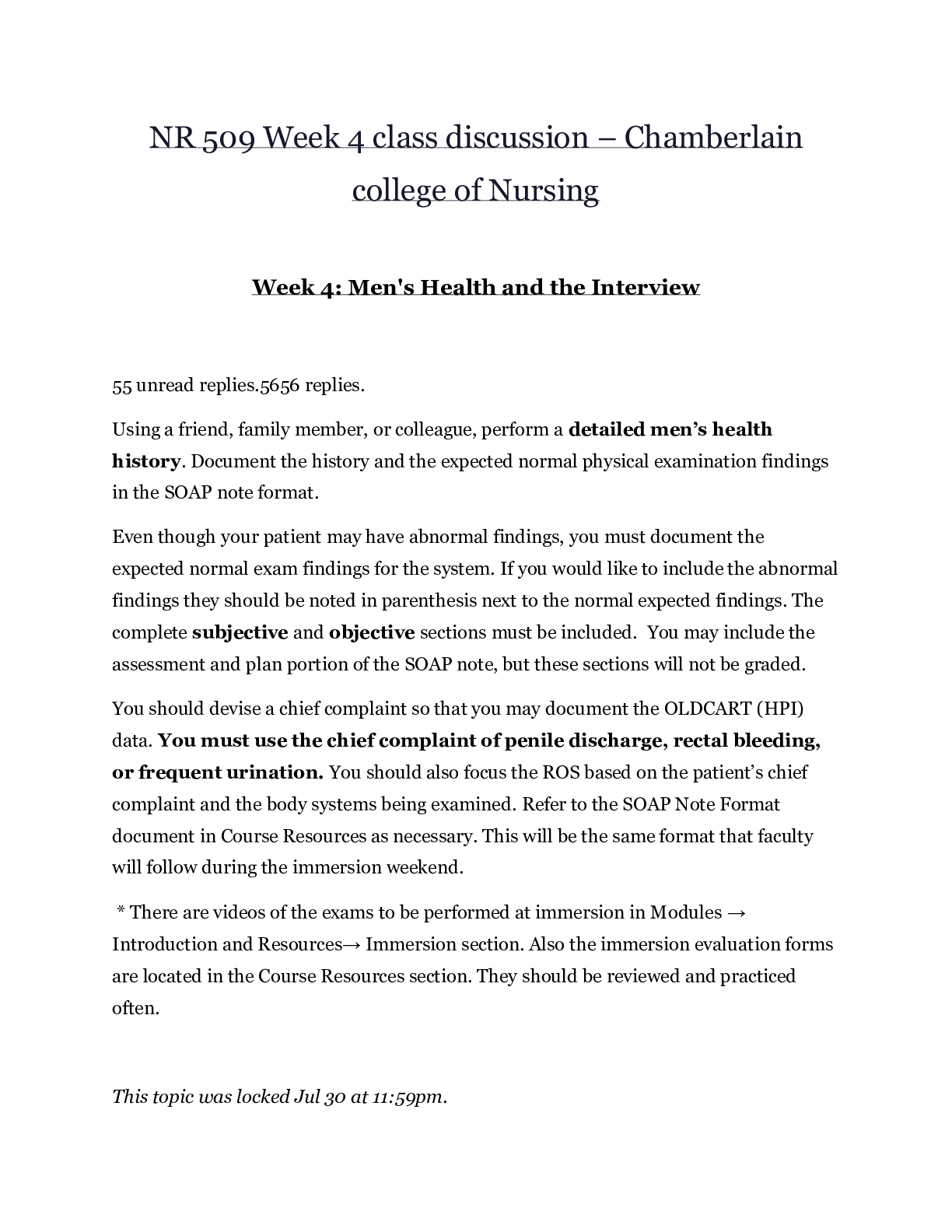
Reviews( 0 )
Document information
Connected school, study & course
About the document
Uploaded On
Aug 15, 2020
Number of pages
123
Written in
Additional information
This document has been written for:
Uploaded
Aug 15, 2020
Downloads
0
Views
98

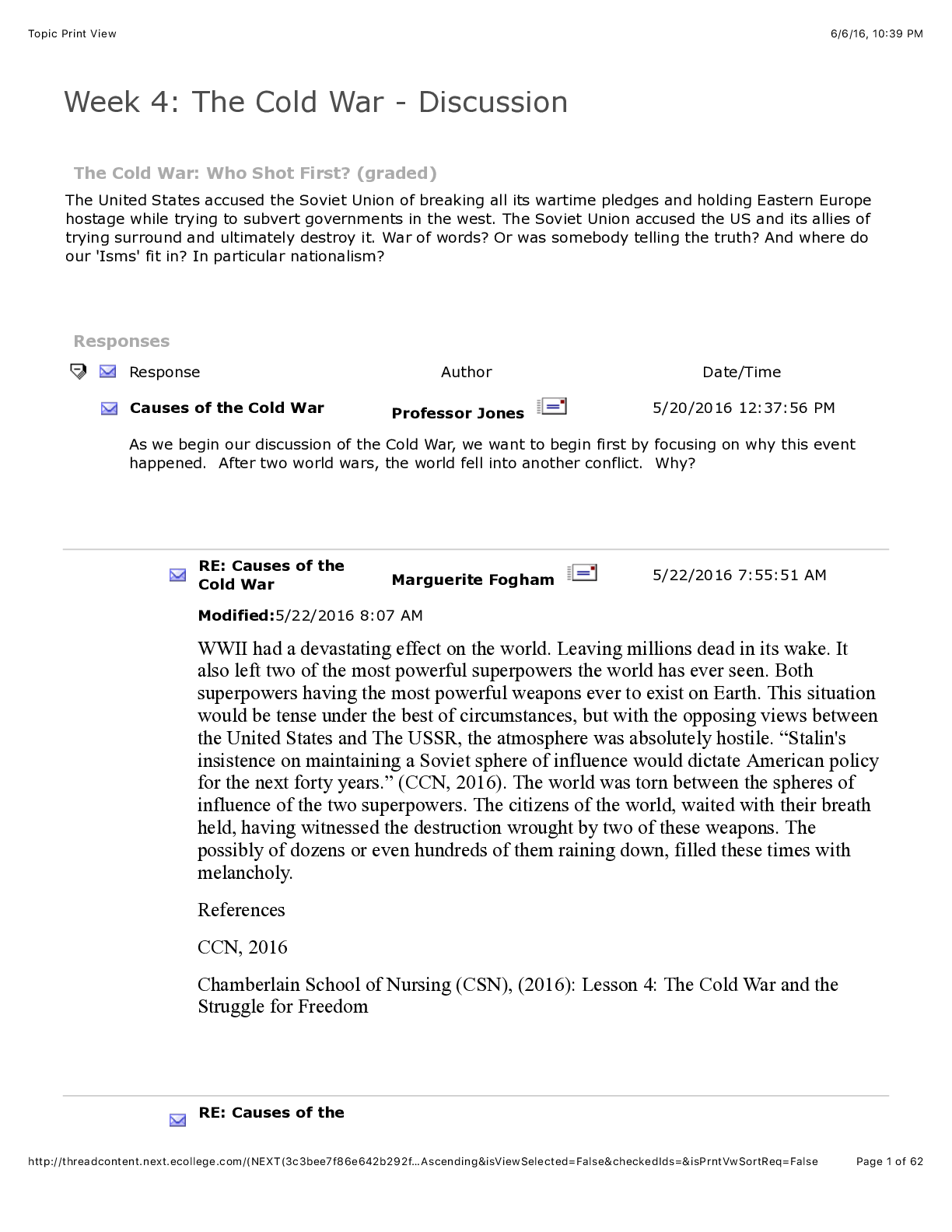
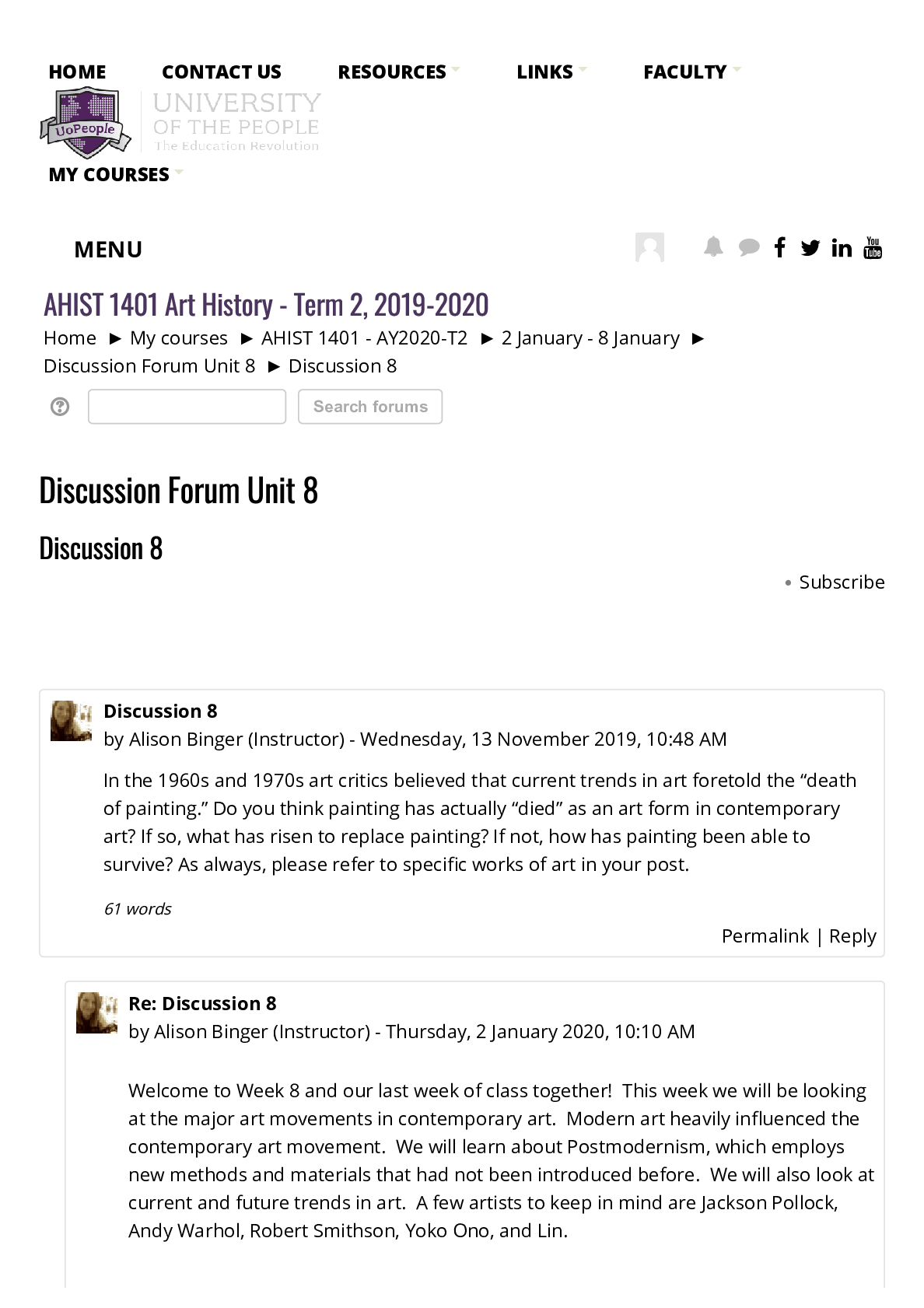
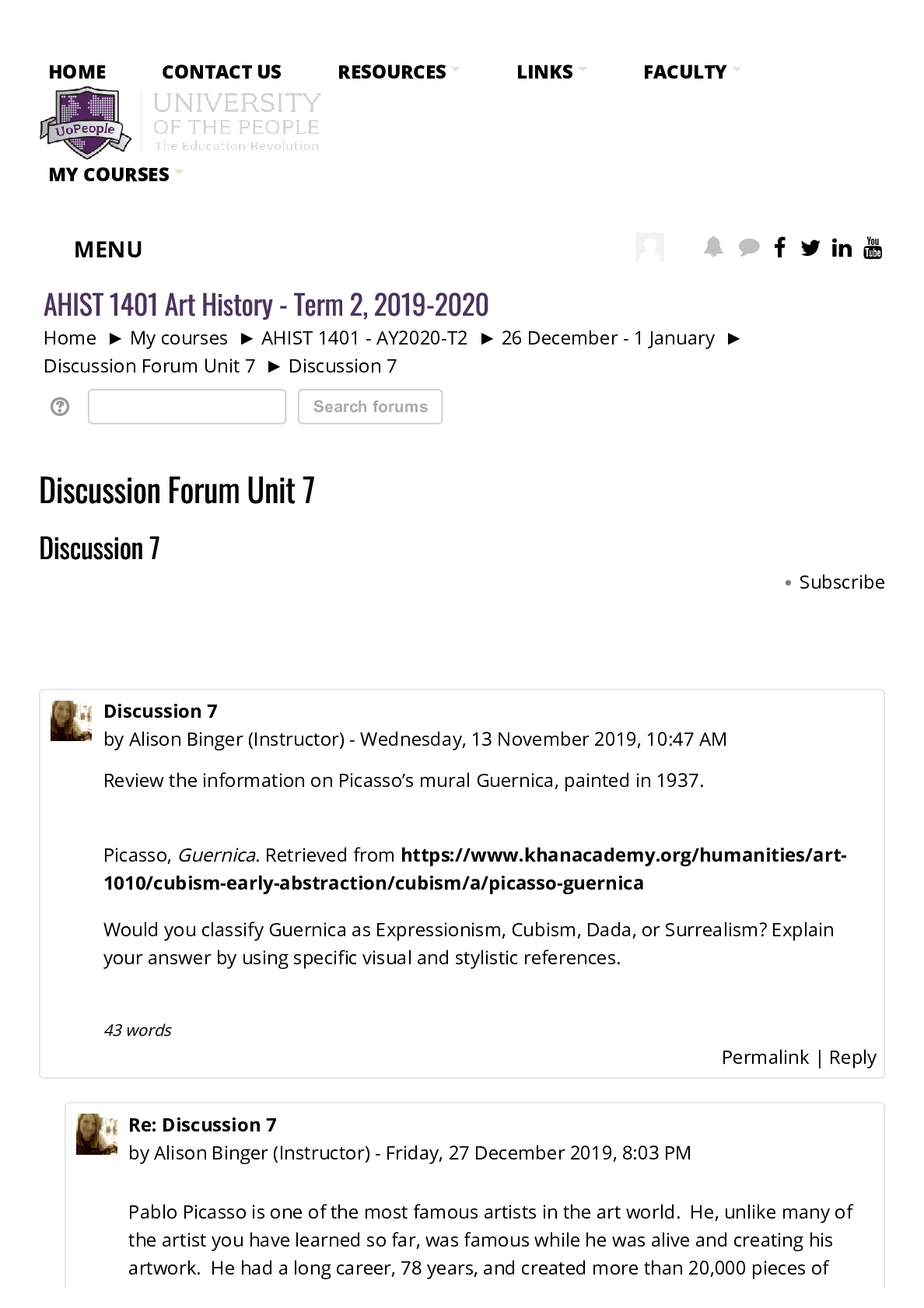

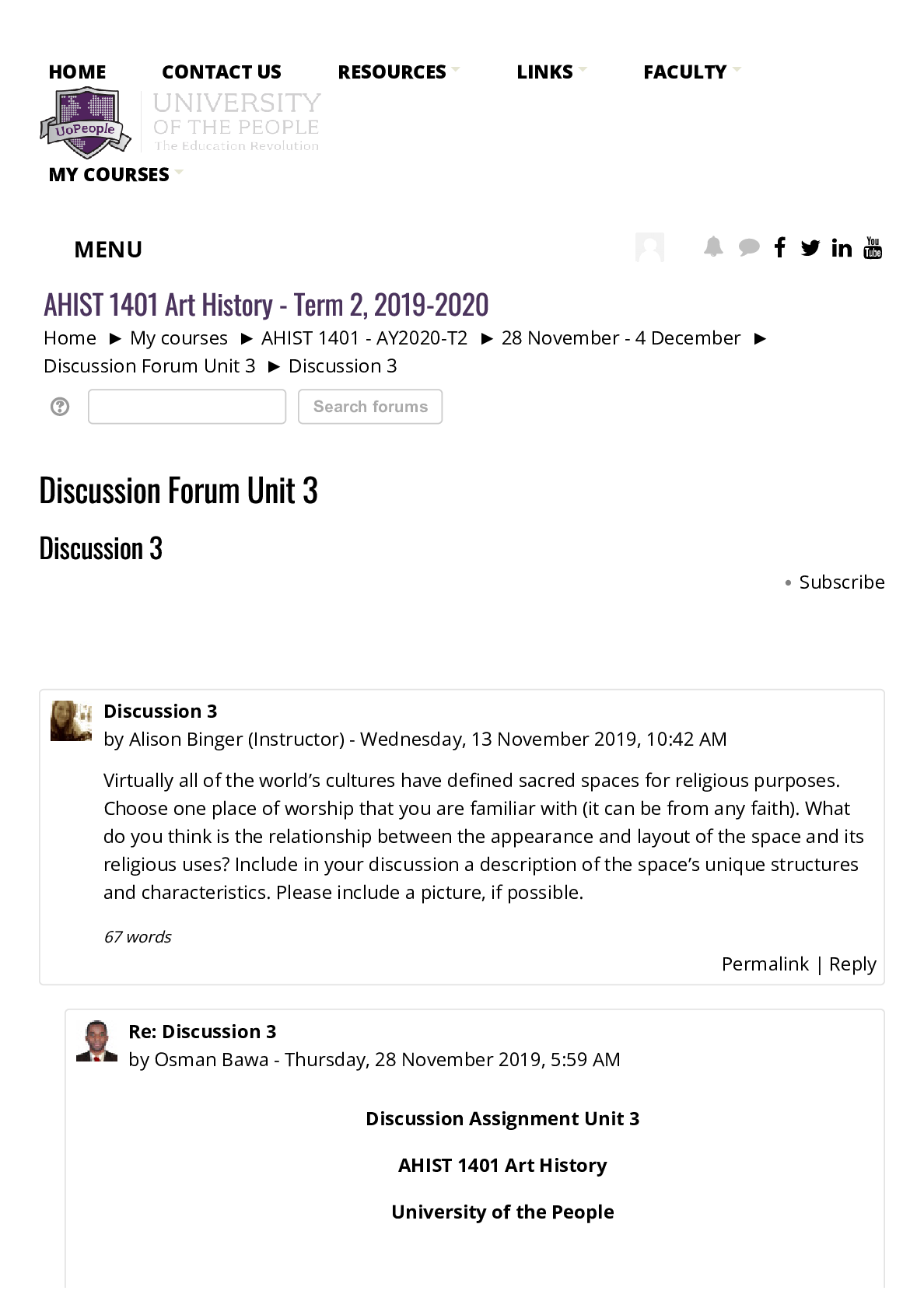
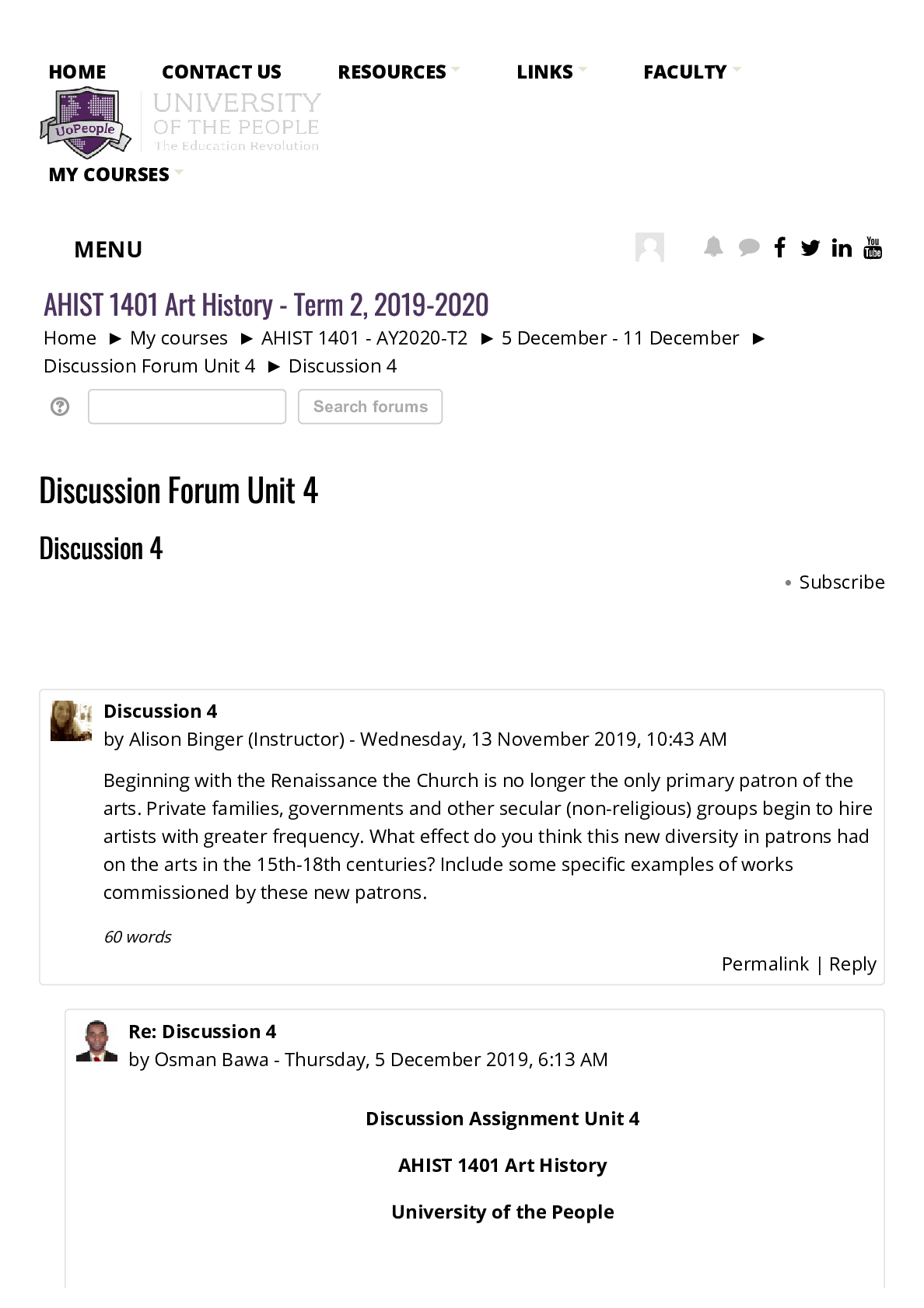

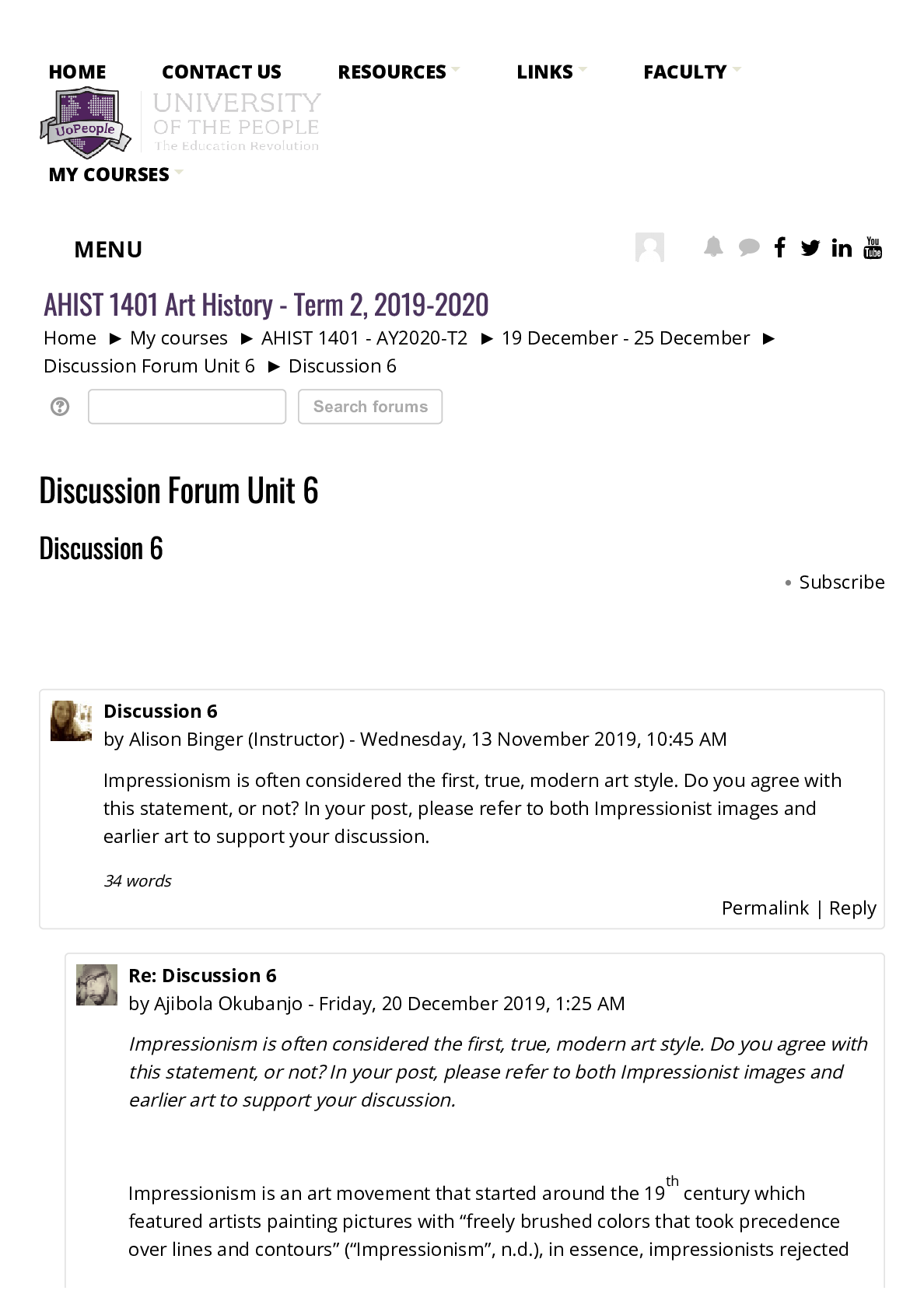


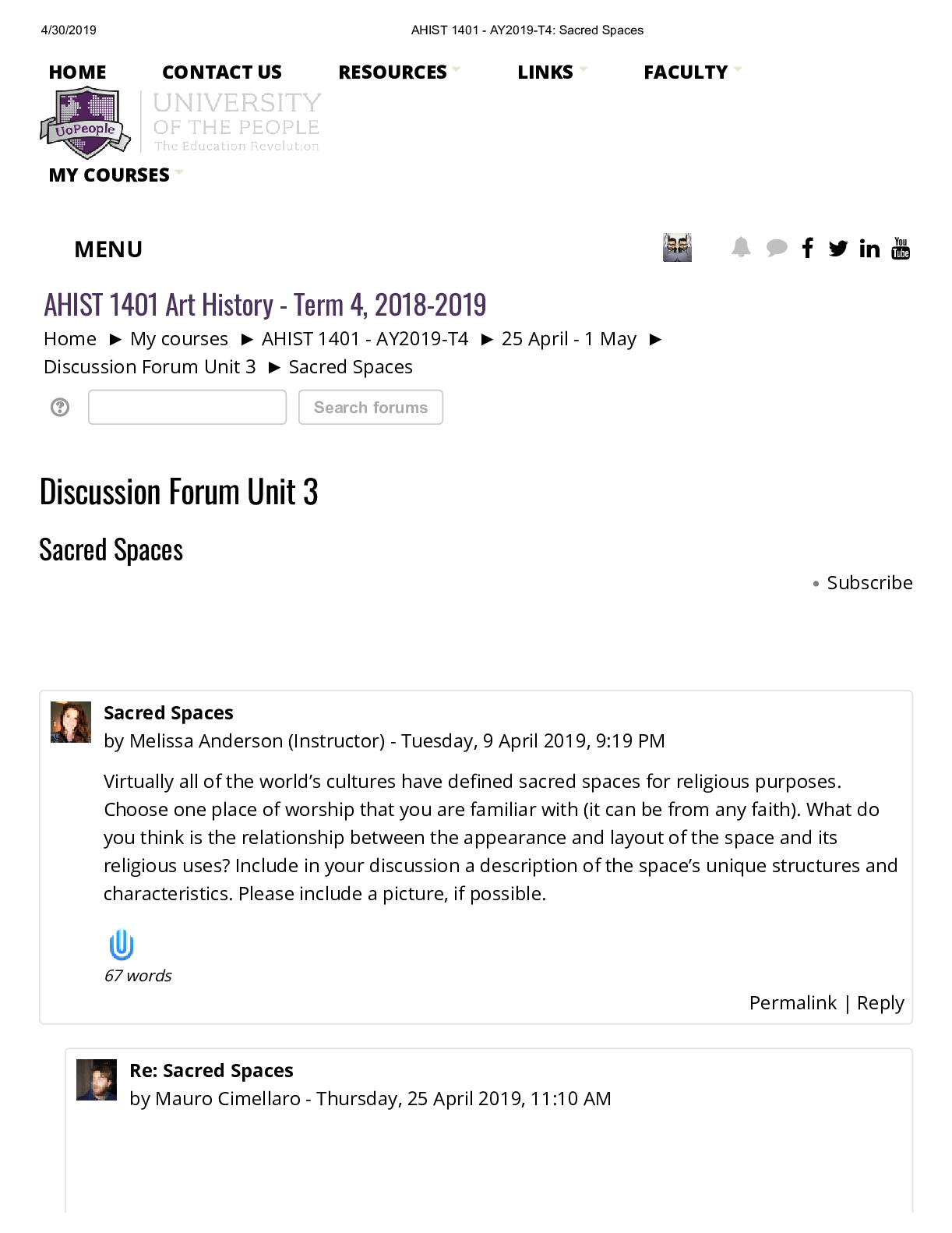
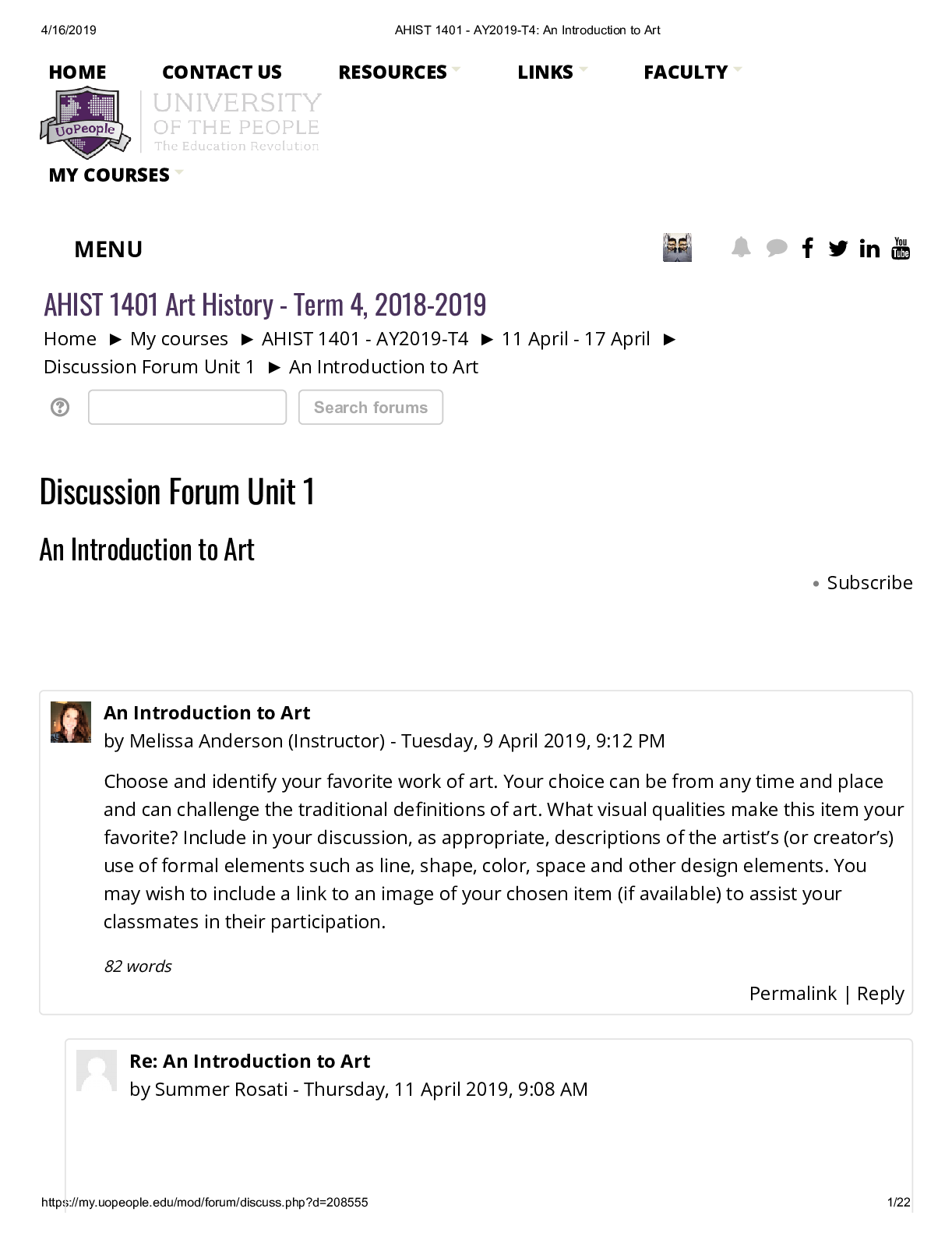
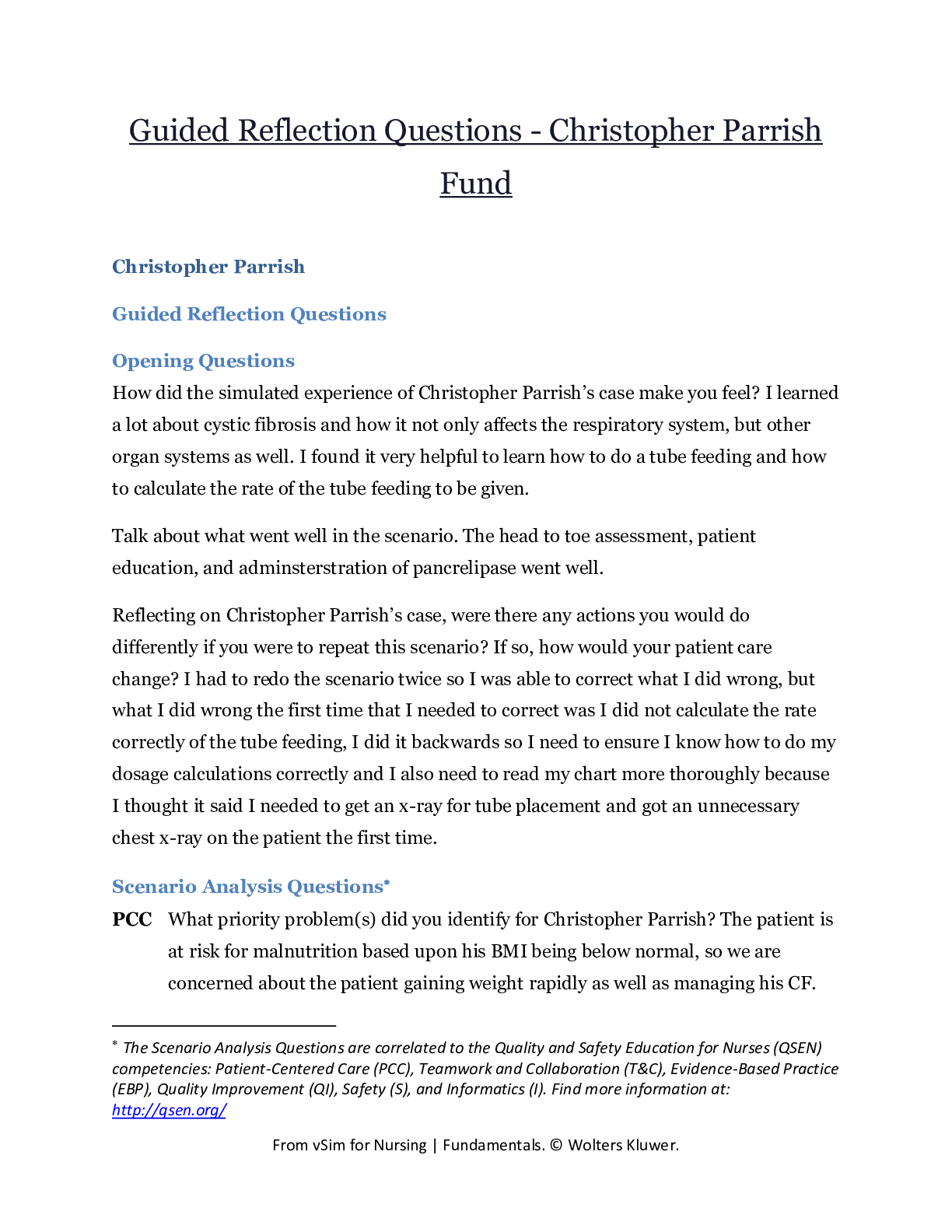
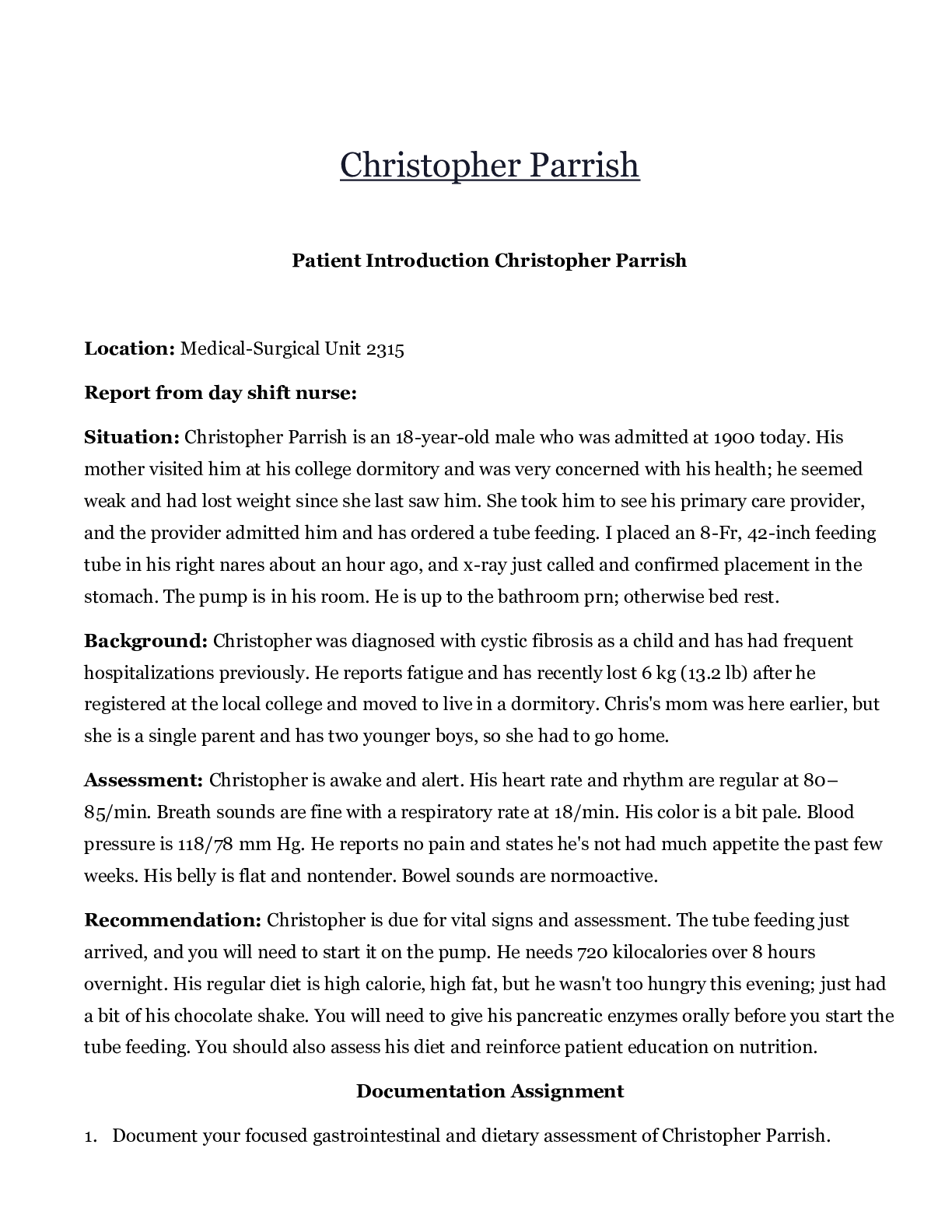
 – South Carolina State University.png)
 – South Carolina State University.png)

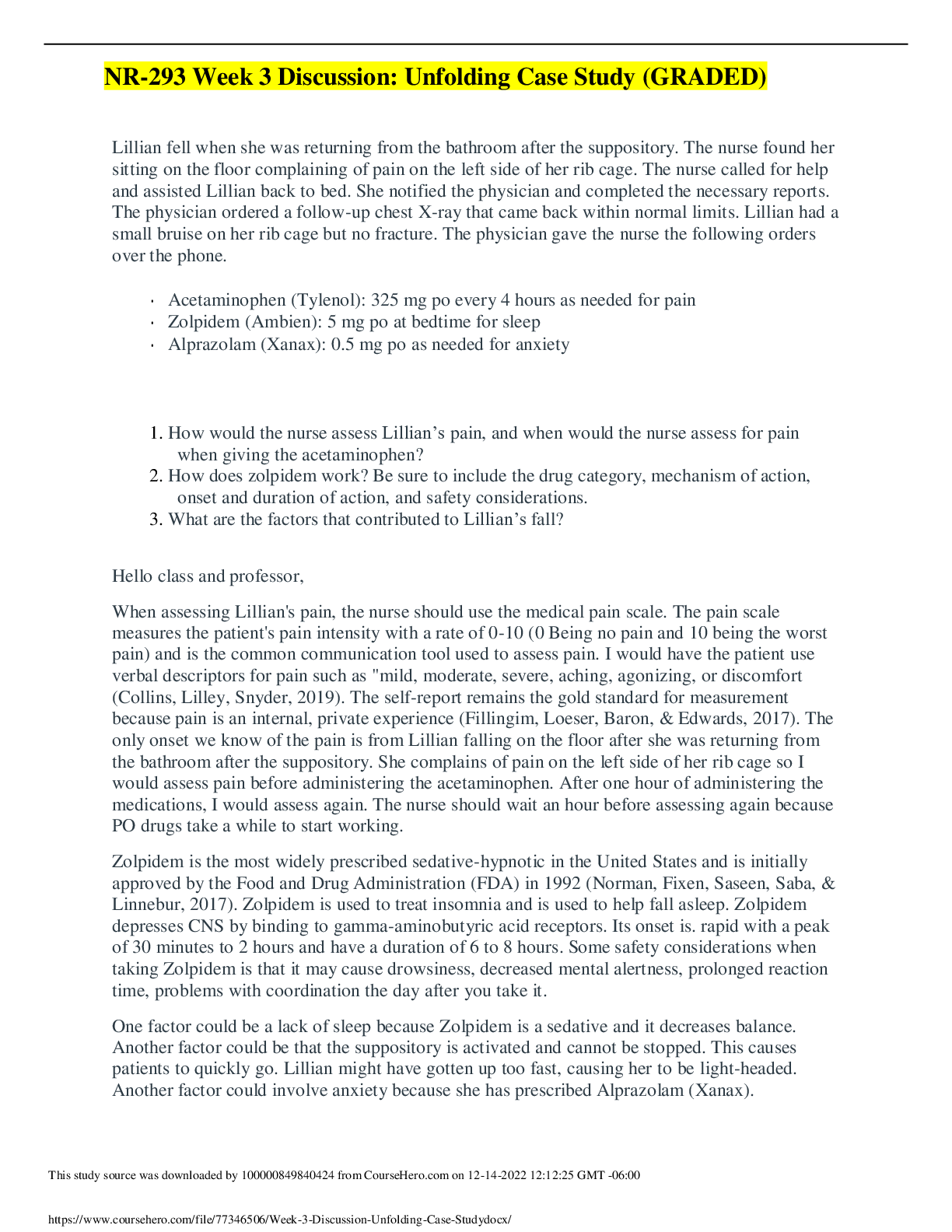

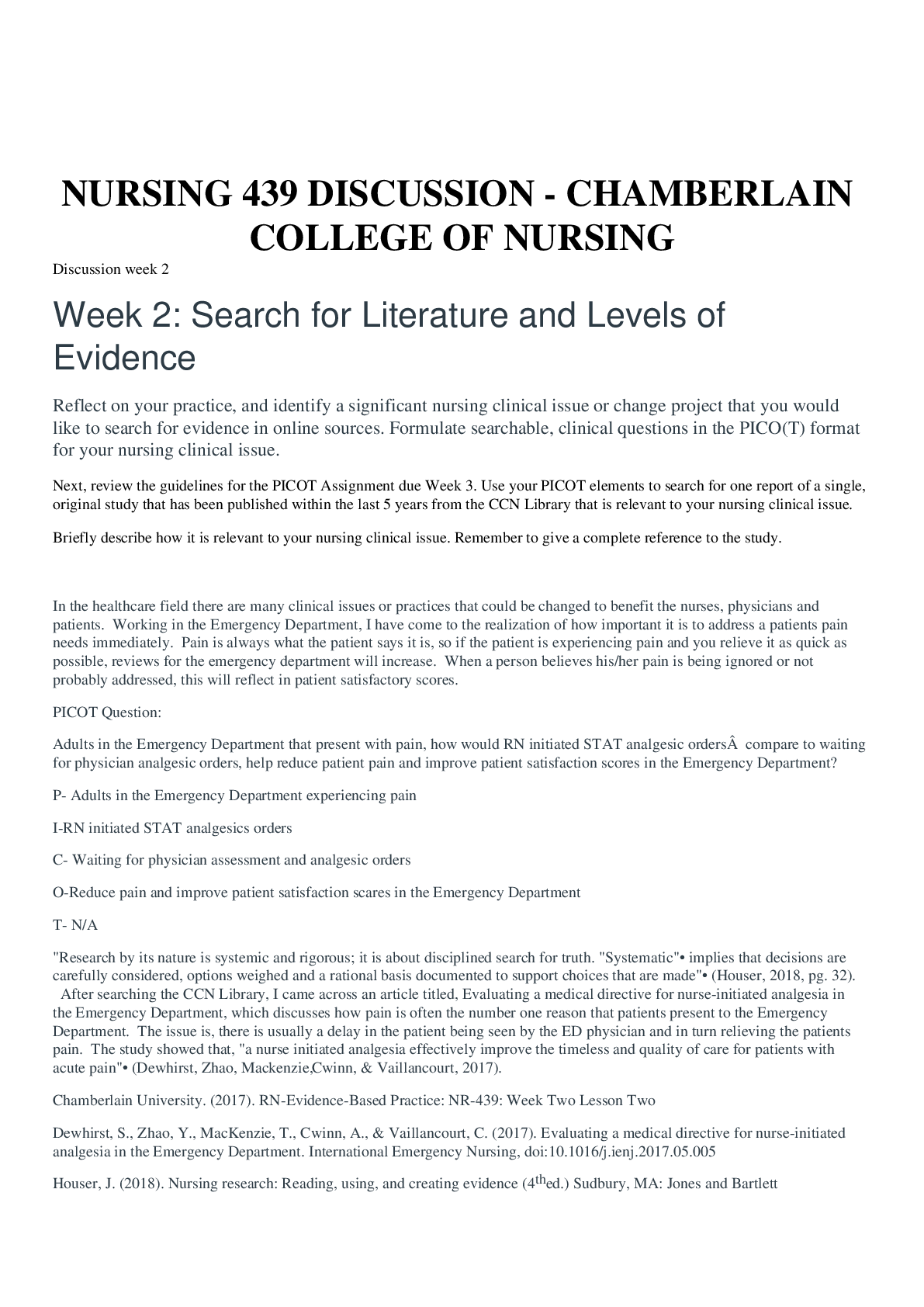
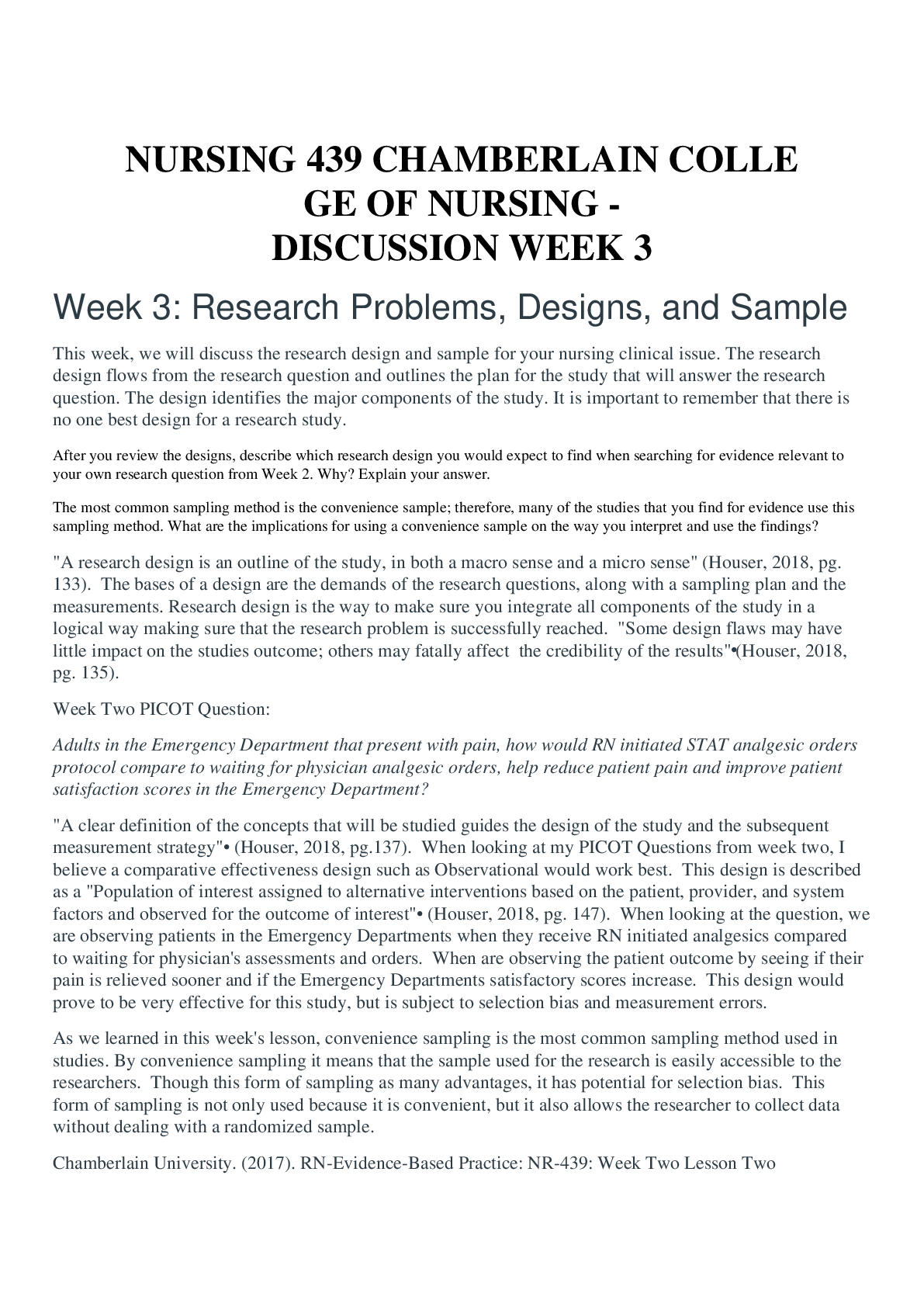




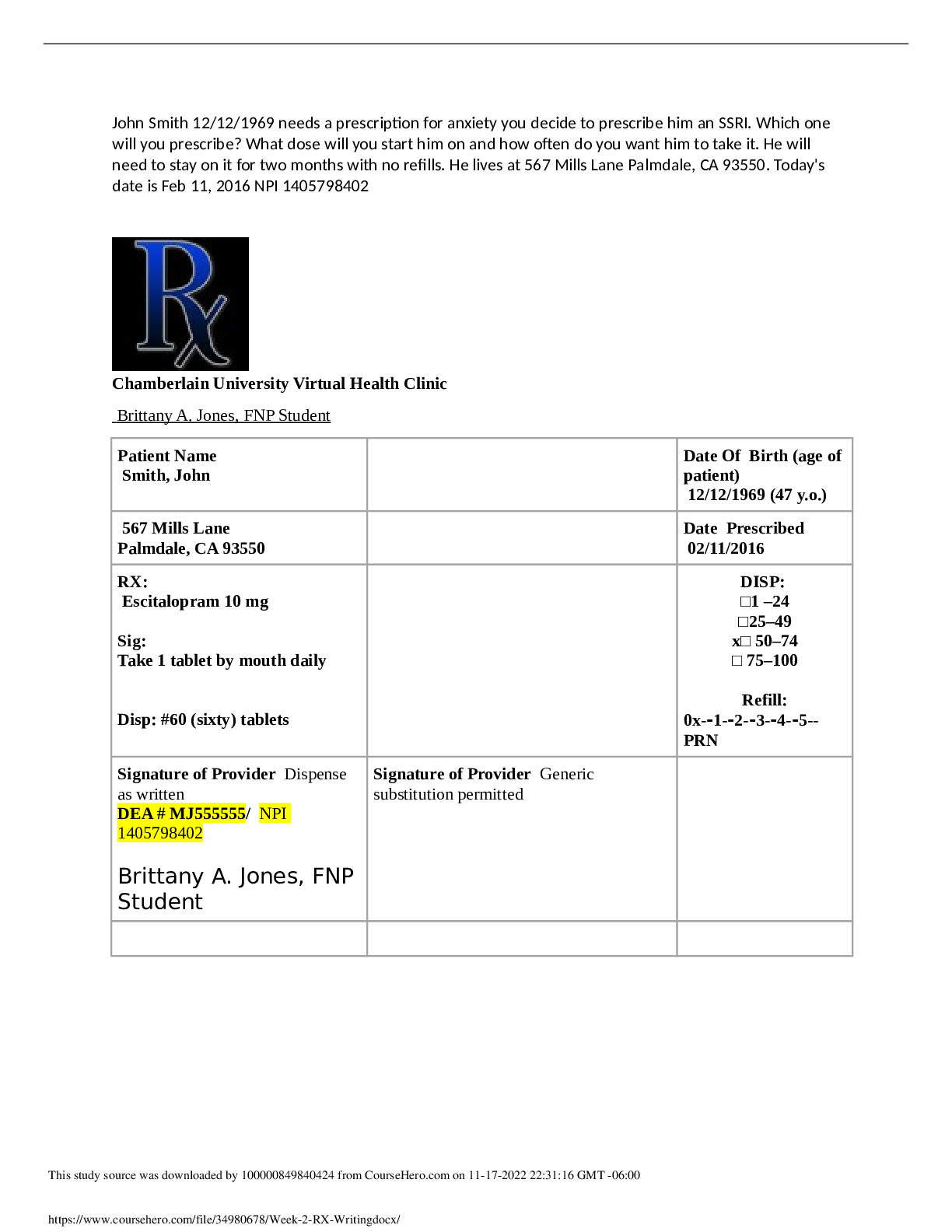


.png)
.png)

.png)
.png)

.png)
.png)

